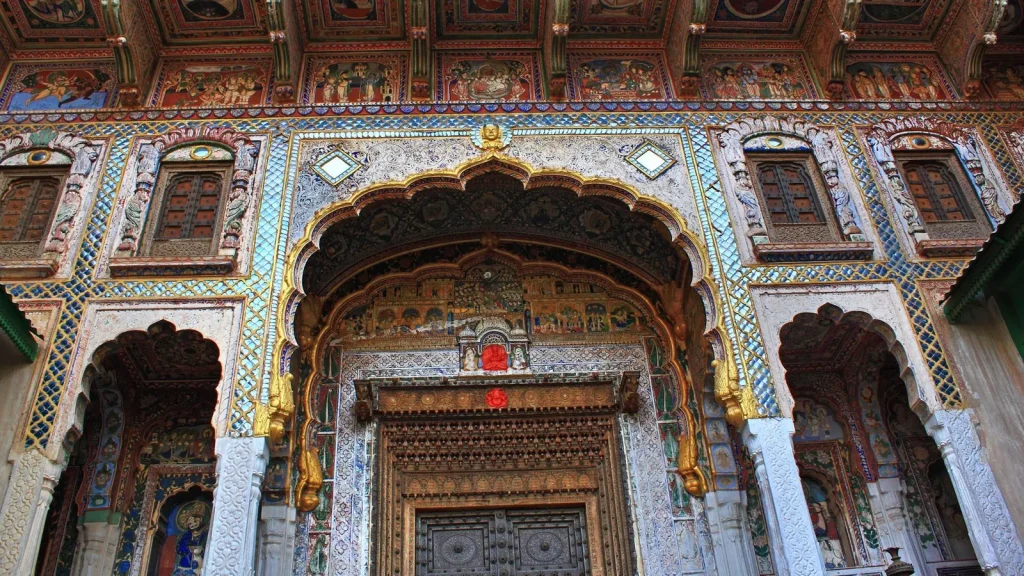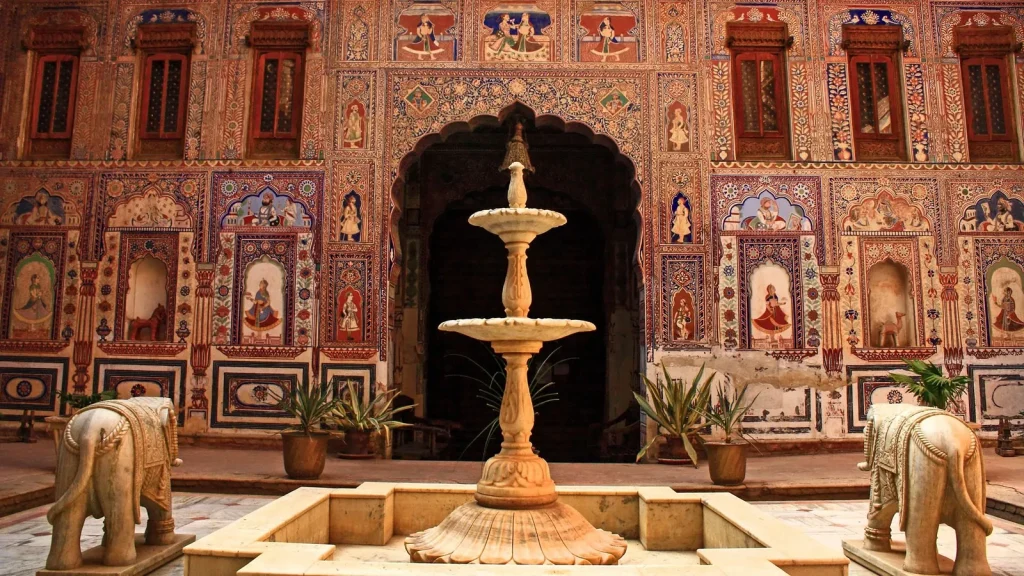Although the majority of the havelis in Shekhawati had collapsed and are now abandoned, a tiny glimpse into the realm of these painted homes is still standing.

A once-opulent residence
The Shekhawati region, now forgotten amid the desolate surroundings of Rajasthan’s Thar Desert, was formerly the unbridled extravagance of India’s billionaires. The faded frescoes that formerly marked the only reminders of the area’s former grandeur are now eroding from many of the billionaires’ enormous havelis, or palaces.

Saturating the arid cities with color
The cities and villages of Shekhawati contain the greatest concentration of exquisite frescoes in one location in the world, with paintings adorning almost every square inch of the opulent havelis. Two districts in Shekhawati have outlawed the selling of havelis to anyone who would detract from their historically significant appearance in order to prevent these once-grand estates from collapsing even more. Their mission is to preserve Shekhawati and make it a more popular travel destination.

The increase in successful merchants
Shekhawati was founded in the late 15th century by the Rajput chieftain Rao Shekha, and by the turn of the 19th century, it was thriving greatly. In an attempt to attract traders, the area lowered taxes and redirected all caravan trade from the adjacent commercial hubs of Jaipur and Bikaner. From the surrounding cities, merchants from the famed ethnic trading group of India, the Marwari and Bania, migrated into Shekhawati and gained immense wealth through a flourishing trade in opium, cotton, and spices. By the end of the 19th century, modest merchant houses began to give place to opulent mansions.

Where artistic expression and money come together
The trade centers of Rajasthan saw a steady decline when the 1820s saw a shift in trade from caravan routes to sea routes and railways. But the bold merchants of Shekhawati followed the money trail and settled in the developing Indian coastal ports of Bombay and Calcutta, sending vast sums of money home to their homes in Shekhawati, thus kicking off an era of distinctively painted havelis that served as opulent displays of wealth.

Blending mythology with contemporary
Early in the 20th century, the frescoes started to show new innovations and European influences, reflecting the well-travelled merchants’ observations of the large cities. Rarely, the painters were asked to study and replicate the scenes. There are paintings depicting Queen Elizabeth, Jesus, cherubs, steam engines, and gramophones among the usual themes. There are also quirky creations that combine mythology with contemporary technology, including Hindu gods driving chauffeur-driven vehicles (see photo).

A fresh start for the Shekhawati estates
Fortunately, not everyone ignores the exquisiteness and cultural value of these painted havelis. The 1802-built Nand Lal Devra Haveli in the town of Fatehpur was acquired by French artist Nadine Le Prince in 1999, and she laboriously brought it back to its former splendor. Today it is known as the Nadine Le Prince Cultural Centre. The family homes of Seth Arjun Das Goenka Haveli and Shri Jairam Dasji Morarka in the nearby towns of Dunlod and Nawalgarh have also been renovated and made into museums open to the public. In Shekhawati’s hinterlands are a few other havelis that had been converted to museums; some, including Malji ka Kamra, Koolwal Kothi, and Castle Mandawa, have been transformed into heritage hotels.